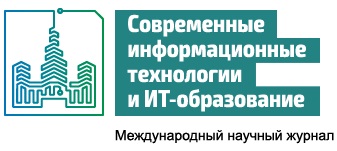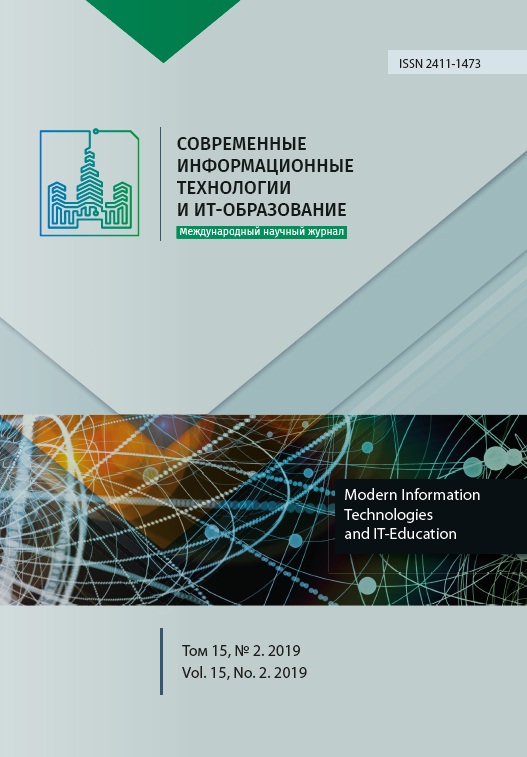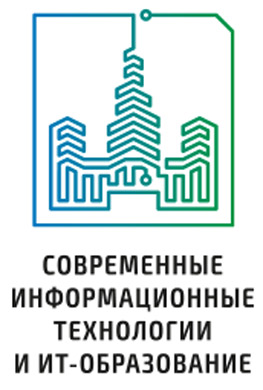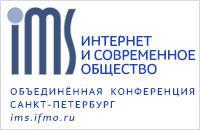Алгоритм построения пространственной структуры сцены
Аннотация
Одной из наиболее актуальных проблем, связанных с разработкой систем технического зрения, является проблема высококачественной пространственной реконструкции статической сцены по изображениям с движущейся камеры. Построение трехмерных моделей требуется во многих областях, где активно ведется роботизация человеческой деятелности: медицине, промышленности, системах управления автономными транспортными средствами и многих других. Традиционные методы пространственной реконструкции основаны на поиске локальных особенностей на изображениях, затем между выявленными особенностями устанавливается соответствие, по этому соответствию определяется фундаментальная матрица и уже на ее основе вычисляется пространственная структура сцены. Качество методов, основанных на вычислении особенностей, зависит от качества выборки особенностей для вычисления фундаментальной матрицы. Предлагается алгоритм восстановления трехмерной структуры сцены по последовательности изображений, который основан на плотном методе сопоставления изображений – оптическом потоке, но с учетом ограничений эпиполярной геометрии. Алгоритм пространственной реконструкции основывается на минимизации совместного функционала вычисления оптического потока и эпиполярной геометрии с одновременным определением пространственных координат точек сцены. Такой способ минимизации одного общего функционала для всех неизвестных обеспечивает более высокую точность их совместного вычисления и соответственно более качественное построение пространственной структуры сцены. Эксперименты показывают, что метод является хорошей альтернативой подходам, основанным на поиске особых точек на изображениях и вычислении их позиции в трехмерном пространстве по принципу триангуляции. В качестве входных данных требуется последовательность изображений статической сцены, полученных при движении наблюдателя по непрерывной траектории. Кроме того, предполагаются известными внутренние параметры камеры.
Литература
[2] Schneevoigt T., Schroers C., Weickert J. A Dense Pipeline for 3D Reconstruction from Image Sequences. In: Jiang X., Hornegger J., Koch R. (eds). Pattern Recognition. GCPR 2014. Lecture Notes in Computer Science. Springer, Cham. 2014; 8753:629-640. (In Eng.) DOI: 10.1007/978-3-319-11752-2_52
[3] Hartley R., Zisserman A. Multiple View Geometry in Computer Vision. 2nd Edition. Cambridge University Press, Cambridge, UK, 2004. (In Eng.)
[4] Kuznetsov P.K., Martemyanov B.V., Semavin V.I. Machine Vision of Mobile Platforms. Method of the Optical Flow Analysis of Dynamic Images. Vestnik komp'iuternykh i informatsionnykh tekhnologii (Herald of computer and information technologies). 2014; 1(115):3-9. (In Russ., abstract in Eng.) DOI: 10.14489/vkit.2014.01.pp.003-009
[5] Kuznesov P.K., Martemyanov B.V., Semavin V.I., Chekotilo E.Yu. Method for Computing Velocity of Moving Objects by Image Analysis. Vestnik of Samara State Technical University (Technical Sciences Series). 2008; 2(22):96-110. Available at: https://elibrary.ru/item.asp?id=13089112 (accessed 06.06.2019). (In Russ., abstract in Eng.)
[6] Bruhn A., Weickert J, Schnörr C. Lucas/Kanade Meets Horn/Schunck: Combining Local and Global Optic Flow Methods. International Journal of Computer Vision. 2005; 61(3):211–231. (In Eng.) DOI: 10.1023/B:VISI.0000045324.43199.43
[7] Brox T., Bruhn A., Papenberg N., Weickert J. High Accuracy Optical Flow Estimation Based on a Theory for Warping. In: Pajdla T., Matas J. (eds). Computer Vision - ECCV 2004. ECCV 2004. Lecture Notes in Computer Science. Springer, Berlin, Heidelberg. 2004; 3024:25-36. (In Eng.) DOI: 10.1007/978-3-540-24673-2_3
[8] Valgaerts L., Bruhn A., Weickert J. A Variational Model for the Joint Recovery of the Fundamental Matrix and the Optical Flow. In: Rigoll G. (eds). Pattern Recognition. DAGM 2008. Lecture Notes in Computer Science. Springer, Berlin, Heidelberg. 2008; 5096:314-324. (In Eng.) DOI: 10.1007/978-3-540-69321-5_32
[9] Valgaerts L., Bruhn A., Mainberger M., Weickert J. Dense versus Sparse Approaches for Estimating the Fundamental Matrix. International Journal of Computer Vision. 2012; 96(2):212-234. (In Eng.) DOI: 10.1007/s11263-011-0466-7
[10] Bruhn A., Weickert J. Towards ultimate motion estimation: combining highest accuracy with real-time performance. Tenth IEEE International Conference on Computer Vision (ICCV'05). Vol. 1, Beijing. 2005; 749-755. (In Eng.) DOI: 10.1109/ICCV.2005.240
[11] Roxas M., Oishi T. Real-Time Simultaneous 3D Reconstruction and Optical Flow Estimation. 2018 IEEE Winter Conference on Applications of Computer Vision (WACV). Lake Tahoe, NV. 2018; 885-893.
(In Eng.) DOI: 10.1109/WACV.2018.00102
[12] Belyakov P.V., Nikiforov M.B. System-on-Chip variational optical flow computation. Digital Signal Processing. 2018; 3:76-82. Available at: https://elibrary.ru/item.asp?id=36276676 (accessed 06.06.2019). (In Russ., abstract in Eng.)
[13] Belyakov P.V., Larkin E.V., Nikiforov M.B. Variotional Optical Flow Method Modification FORFPGA Implementation. News of the Tula state university. Technical sciences. 2018; 9:19-28. Available at: https://elibrary.ru/item.asp?id=36394730 (accessed 06.06.2019). (In Russ., abstract in Eng.)

Это произведение доступно по лицензии Creative Commons «Attribution» («Атрибуция») 4.0 Всемирная.
Редакционная политика журнала основывается на традиционных этических принципах российской научной периодики и строится с учетом этических норм работы редакторов и издателей, закрепленных в Кодексе поведения и руководящих принципах наилучшей практики для редактора журнала (Code of Conduct and Best Practice Guidelines for Journal Editors) и Кодексе поведения для издателя журнала (Code of Conduct for Journal Publishers), разработанных Комитетом по публикационной этике - Committee on Publication Ethics (COPE). В процессе издательской деятельности редколлегия журнала руководствуется международными правилами охраны авторского права, нормами действующего законодательства РФ, международными издательскими стандартами и обязательной ссылке на первоисточник.
Журнал позволяет авторам сохранять авторское право без ограничений. Журнал позволяет авторам сохранить права на публикацию без ограничений.
Издательская политика в области авторского права и архивирования определяются «зеленым цветом» в базе данных SHERPA/RoMEO.
Все статьи распространяются на условиях лицензии Creative Commons «Attribution» («Атрибуция») 4.0 Всемирная, которая позволяет другим использовать, распространять, дополнять эту работу с обязательной ссылкой на оригинальную работу и публикацию в этом журналe.













